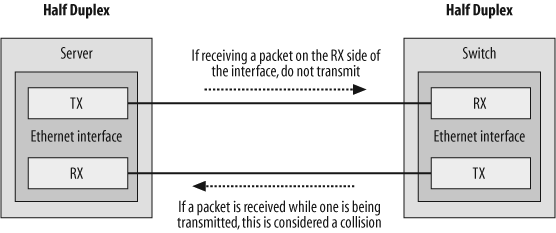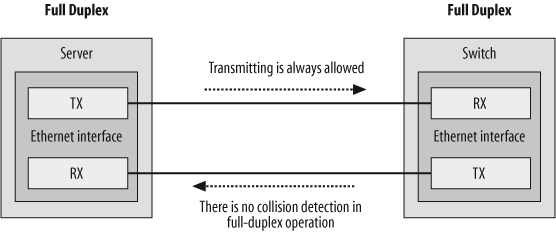When Auto-Negotiation Fails
When auto-negotiation fails on 10/100 links, the most likely cause is that one side of the link has been set to 100/full, and the other side has been set to auto-negotiation. This results in one side being 100/full, and the other side being 100/half.
Figure 3-1 shows a half-duplex link. In a half-duplex environment, the receiving (RX) line is monitored. If a frame is present on the RX link, no frames are sent until the RX line is clear. If a frame is received on the RX line while a frame is being sent on the transmitting (TX) line, a collision occurs. Collisions cause the collision error counter to be incrementedâand the sending frame to be retransmittedâafter a random back-off delay.

Figure 3-1. Half duplex
Figure 3-2 shows a full-duplex link. In full-duplex operation, the RX line is not monitored, and the TX line is always considered available. Collisions do not occur in full-duplex mode because the RX and TX lines are completely independent.

Figure 3-2. Full duplex
When one side of the link is full-duplex, and the other side is half-duplex, a large number of collisions will occur on the half-duplex side. Because the full-duplex side sends frames without checking the RX line, if it's a busy device, chances are it will be sending frames constantly. ...
Get Network Warrior now with the O’Reilly learning platform.
O’Reilly members experience books, live events, courses curated by job role, and more from O’Reilly and nearly 200 top publishers.

